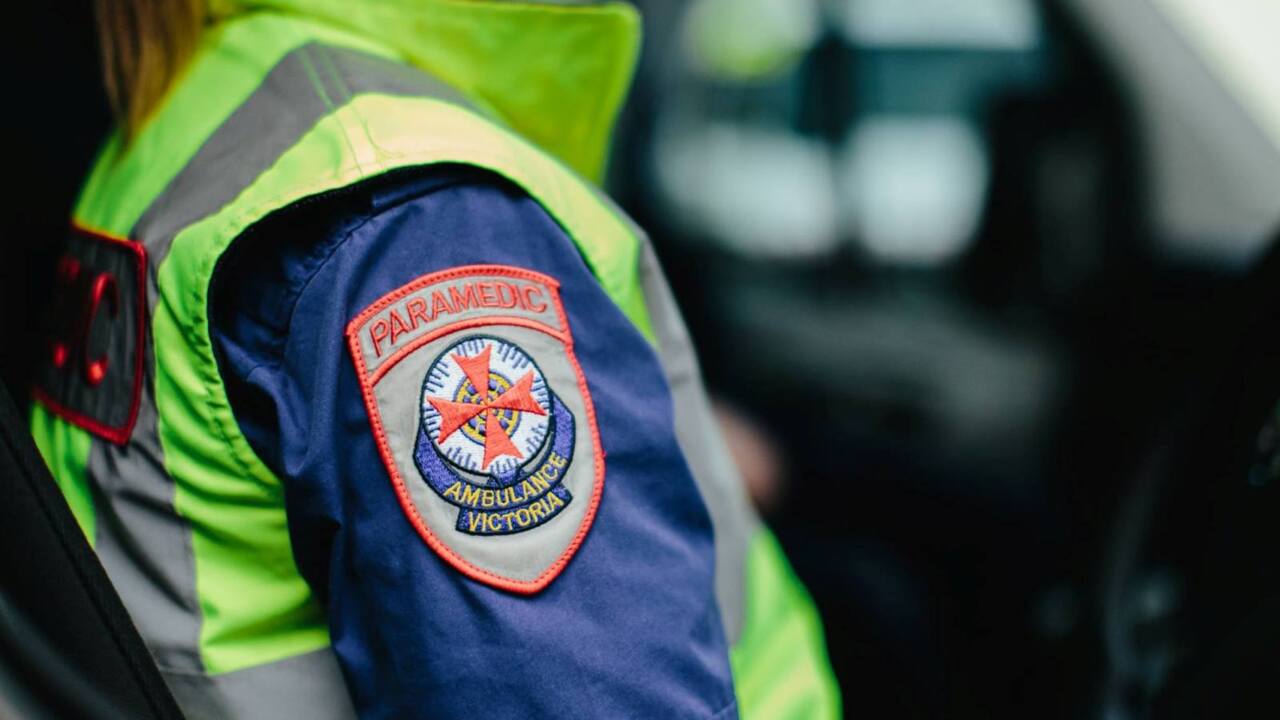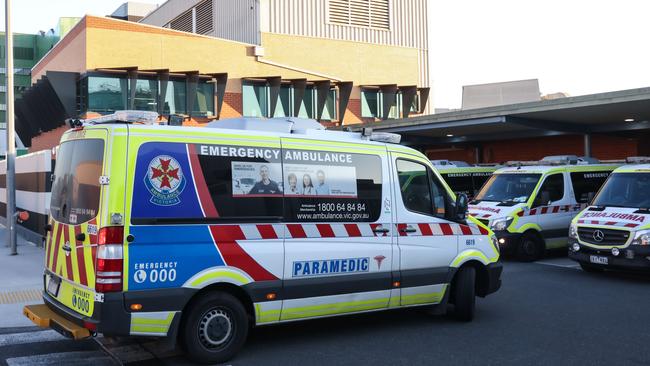Ambulance response times by region revealed
Ambulance Victoria missed their urgent response targets in every single council area. See how long your area waited.

Victoria
Don't miss out on the headlines from Victoria. Followed categories will be added to My News.
Ambulance Victoria missed their code one response targets in every council area last quarter, with four out of five patients in the state’s worst region waiting longer than the benchmark.
The agency is supposed to reach 85 per cent of Victoria’s “lights and sirens” patients in 15 minutes, but the latest data found this fell to 64 per cent during their busiest quarter in history.
Indigo, in the state’s north east, recorded the worst result with figures released on the weekend showing only 20.6 per cent of first responders to code one calls arrived within 15 minutes.
The area’s average code one response time between April and June this year was 25 minutes and 35 seconds.
Next on the list was Golden Plains, where a quarter of cases made the 15-minute benchmark, while Loddon, Strathbogie and Pyrenees rounded out the top five with results ranging from 27 to 30 per cent.
Nillumbik (49.4 per cent) and Cardinia (49.6 per cent) had the worst response times among metropolitan LGAs, but were the only Melbourne regions where less than half of code one calls out met target.
The average response time stretched out to 17 minutes and 50 seconds, and 18 minutes and 36 seconds respectively.
Melton came in third (50.5 per cent), followed by Yarra Ranges (54.8 per cent) and Hume (59.6 per cent) — the last Melbourne LGA below the 60 per cent mark.
While metropolitan Melbourne tended to fare better – the twenty worst LGAs were all in regional Victoria – Warrnambool was the only LGA in Victoria to score above 80.
Eighty-three per cent of paramedics reached code one patients in time and their average response time was 11 minutes and 59 seconds – well short of the 15-minute target.
Horsham and Ballarat both scored about 77 per cent, while the fourth best in the state — and best metropolitan area — was Melbourne.
76.3 per cent of ambulances reached code one patients within a quarter of an hour.
Responding to the data on Saturday, Ambulance Victoria interim chief executive Felicity Topp said they were working to relieve the pressure caused by soaring demand, the Omicron variant, deferred care and staff furloughs.

“There are no signs of demand slowing down through winter,” she said.
“Our paramedics are working extremely hard to manage the increasing demand while prioritising care to the sickest Victorians.”
She said they had introduced Ambulance Victoria Offload (AVOL) teams to help improve patient transfer times at hospitals.
“These teams, established as part of our pandemic response efforts to improve patient flow at the ambulance and hospital interface, are now being expanded to 14 public hospitals and a further five are in planning,” she said.
Ambulance Victoria Union general secretary Danny Hill, also speaking on Saturday, told the Herald Sun paramedics were “just getting smashed” but continue to provide world-class care.
“Let’s just remember they’re absolute heroes,” he said.
“Ambulance Victoria is still delivering world class cardiac arrest survival rates.
“All the workers in the area … deserve to be commended for working through such challenging times.”
He said the solution wasn’t necessarily to put more paramedics on the road, but instead focus on initiatives — such as virtual emergency departments — that non-urgent cases can be referred to.
“I am pleased that we are seeing investment in the right areas,” he said.
“We’re seeing a lot more expansion of pathways to deal with low acuity patients.”




